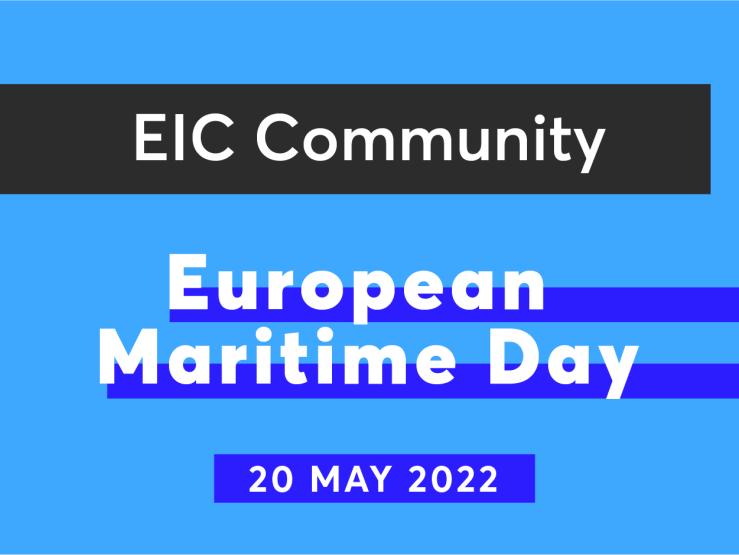For this year’s European Maritime Day, we got in the innovation boat with 4 EIC-funded companies that are: generating clean tidal energy, using seaweed resources without harming the ocean and reducing the environmental impact of shipping. Keep reading to learn more about the growing potential of a healthy blue economy in Europe.
Nova Innovation: water moving to create clean energy
One great use that we can make of our beautiful oceans is to take advantage of energy generated from the movement of water. This is called tidal energy. Nova Innovation is a world-leading tidal energy company on a “mission is to deliver clean, predictable electricity for clients around the world and the potential of global tidal resources is immense”, as stated by the company’s CEO, Simon Forrest. Nova has received EIC funding to develop the Direct Drive Tidal Turbine (D2T2). Bringing a revolutionary approach to the tidal and marine renewable industry, their innovative technology was able to reduce the cost of tidal energy by 30%.
Nova Innovation has vast experience in assessing, designing, delivering, operating and maintaining marine energy systems. Their 100 kW tidal turbines are designed for a wide range of site conditions, delivering industry-leading performance, reliability and energy capture. Having their innovative solutions installed in seas, estuaries and large rivers, Nova Innovation serves all parts of the blue economy including utilities, coastal populations and businesses.
Now, according to Simon Forrest, the company is already looking ahead:
“Our first internationally deployed turbine, will be installed in Petit Passage, Canada in July 2022. Two more turbines will be installed in Shetland later this year. With Europe having vast indigenous tidal resources, this is a superb opportunity to harness this untapped potential, to diversify away from fossil fuels and improve security supply. By investing in renewables now and making forward-thinking decisions about what is best for the planet and our futures, we can collectively help drive the world's net zero carbon solution.”.
Alginor: using seaweed resources while protecting the ocean
Different industries are looking to explore more sustainable natural resources, namely ones that we can find in the waters. Seaweed, for example, has proven to be a versatile resource for various applications, namely in pharmaceuticals, functional foods and cosmetics. These different uses lead to seaweed being harvested in large quantities. However, conventional harvesting often involves the use of harmful chemicals, producing pollution and damaging the seabed. EIC-funded Alginor has developed an innovative green harvesting solution that greatly improves harvesting yield, as well as a unique processing technology that avoids the use of harmful chemicals thus reducing environmental impact.
The Norwegian company’s current goal is to develop sustainable and scalable harvesting and biorefining methods for production of kelp-based ingredients for pharmaceutical and nutraceutical applications. Currently, they focus solely on the brown macroalga Laminaria hyperborea, which is found in abundance in the North Atlantic.
Kjetil Rein, CEO of Alginor, talked to us about their focus on maritime resources to achieve our common objective of a sustainable future:
“Laminaria hyperborea represents one of the world’s least utilised renewable resources, and Alginor finds it paramount to find ways to utilise the incredible value that lives within these marine “forests of gold”, while conserving the invaluable ecosystem they are an integral part of. Alginor wishes to highlight that in order to accomplish the European Union’s Green Deal goals, we must look to resources in the ocean as well as resources on land, and find new, valuable and sustainable ways of utilising the immense potential that exists within the blue economy.”.

Norsepower: a shipping transition to a low-carbon future
"Although shipping is still the most environmentally efficient way to transport the majority of the world's goods, the industry recognises the need to adapt and urgently reduce its environmental footprint. Shipping is heavily relying upon new, innovative technologies and solutions, complete with the necessary financial backing, in order to achieve its decarbonisation goals. Rotor Sails provide an opportunity for the shipping industry to make great strides in meeting its 2030 and 2050 greenhouse gas emissions targets; not only improving environmental performance but slashing fuel costs too", said Tuomas Riski, CEO of Norsepower.
Minesto: powering the energy transition with the potential of ocean energy
Minesto is a marine energy technology developer with a patented and awarded innovation called "Deep Green". The Swedish startup took its inspiration from the kite flying on the beach and created a technology that stands out from other tidal energy technologies due to its wing, the size of the turbine and the fact that the power plant is "flying" underwater. The wing pushes the turbine through the water in an eight-shaped trajectory, sweeping a large area at a relative speed that is several times the actual speed of the underwater current.
The speed has a cubic relationship to the power production. This means that when a Deep Green power plant multiplies the relative speed at which the turbine is pushed through the water, the electricity produced by the generator is several hundred times greater than if the turbine was stationary.
"The Dragon Class' increased customer value is straight to the point – maximise yield and minimise costs. This is the backbone product for our ongoing commercial scale-up", said Martin Edlund, CEO of Minesto.
By adding this energy conversion step, Minesto expands the global ocean energy potential. The innovation can develop cost-effective electricity, producing enough energy to power 100 homes. In 2020, Minesto reached the milestone of delivering electricity to the Faroes Islands' power grid from the DG100 tidal kite system.


DISCLAIMER: This information is provided in the interest of knowledge sharing and should not be interpreted as the official view of the European Commission, or any other organisation.

